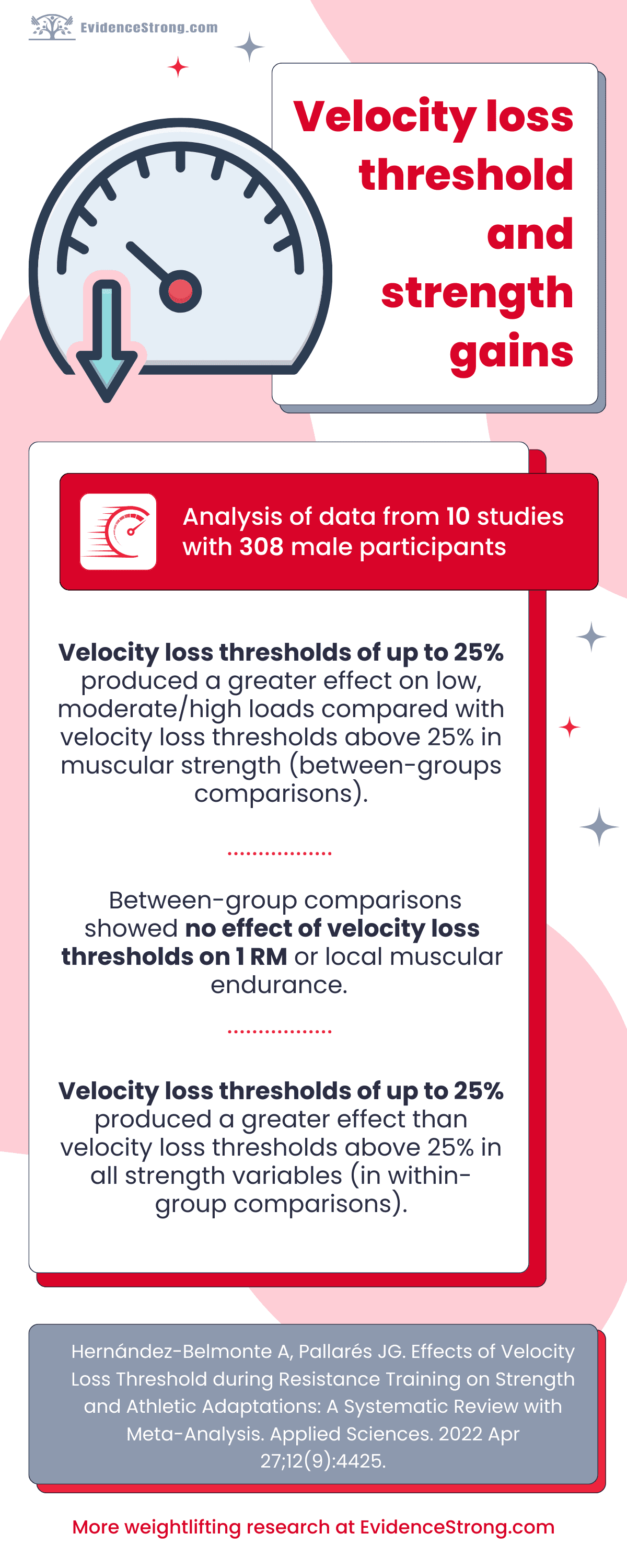Summary of a systematic review analyzing how different velocity loss thresholds used in training are affecting strength and athletic performance.
Who
308 male participants in 24 groups undergoing resistance training of a single exercise using various velocity loss thresholds to guide their training.
Velocity loss is a measure of intra-set fatigue
velocity loss – loss in velocity from repetition to repetition in a set
intra-set fatigue – fatigue generated within each training set. The closer the set to muscle failure (more repetitions and/or more load), the higher levels of mechanical and metabolic stress
Design
Systematic review with meta-analysis of the literature (March 2021).
Outcome measures
Effects of different velocity loss thresholds (≤25% versus >25%) on:
- muscle strength via dynamic, isometric, or isokinetic tests
- athletic performance (jump, sprint, agility, or specific tests)
Main results
- This analysis included 10 studies that tested back squat (7 studies), bench press (2 studies), and push-up (1 study) with loads ranging from body weight to 85% of 1RM (1 repetition maximum) over the 5 to 8 weeks.
- Effect on strength:
- Velocity loss thresholds of up to 25% produced a greater effect on low, moderate/high loads compared with velocity loss thresholds above 25% in muscular strength (between-groups comparisons). Between-group comparisons showed no effect of velocity loss threshold on 1 RM or local muscular endurance.
- Velocity loss thresholds of up to 25% produced a greater effect than velocity loss thresholds above 25% in all strength variables (in within-group comparisons).
- Effect on athletic performance:
- Velocity loss thresholds of up to 25% produced a greater effect on sprint and jump compared with velocity loss thresholds above 25% (between-groups comparisons).
- Velocity loss thresholds of up to 25% produced a greater effect than velocity loss thresholds above 25% in sprint and jump (in within-group comparisons).
Take home message
Original article
Hernández-Belmonte A, Pallarés JG. Effects of Velocity Loss Threshold during Resistance Training on Strength and Athletic Adaptations: A Systematic Review with Meta-Analysis. Applied Sciences. 2022 Apr 27;12(9):4425.
You might want to read next
Acceleration phase in Olympic weightlifting snatch
How the month you were born in affects your Olympic weightlifting performance
